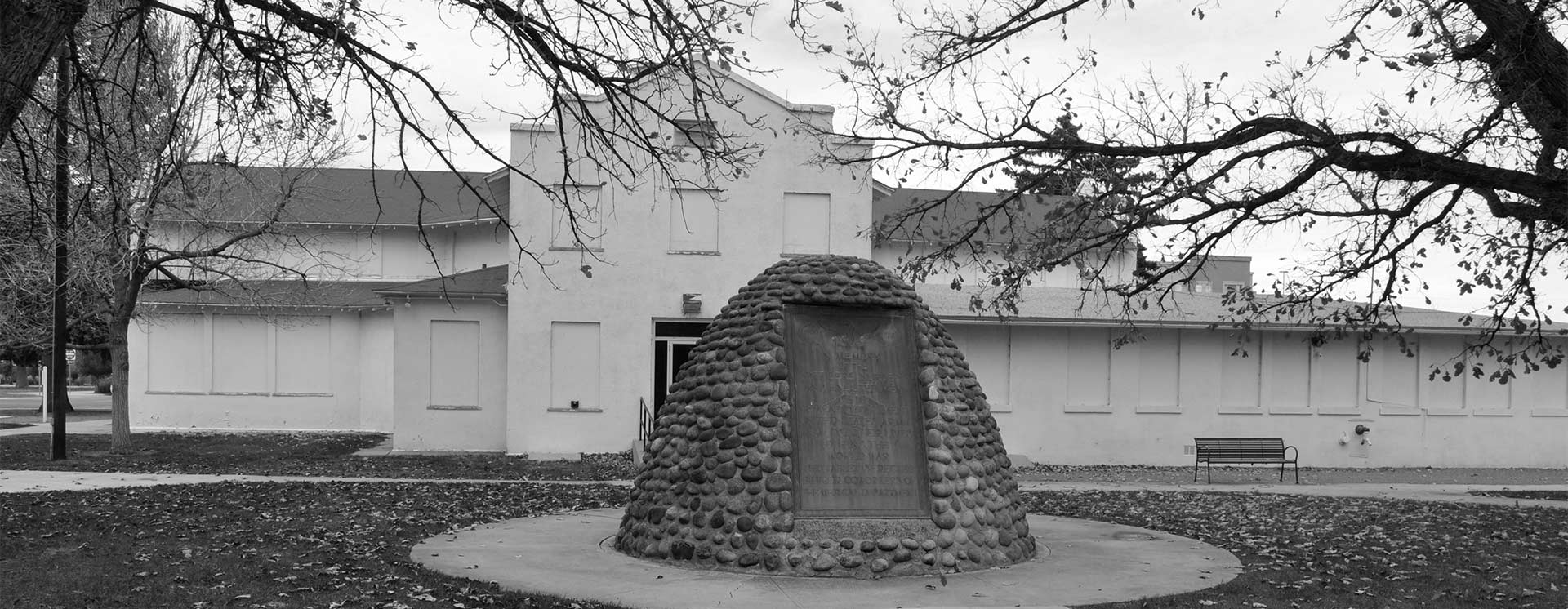
World War One Sites - The NETWORLD Database
A memorial dedicated to the victims of the Doboj camp 1915-1917, Bosnia and Herzegovina
The monument is made up of 3 components that make a functional and aesthetic whole. The first component of the monument is an armored-concrete gate measuring 300x350x150 cm. This gate symbolically represents the entrance to the camp and it is provided with the inscription DOBOJ CAMP 1915-1917.
The second component of the monument is the „Camp inmate“ sculpture, which was placed on the memorial burial ground in the church of Sv. Apostle Peter and Paul but was removed when the memorial palace was restored to its original appearance with a cross.
The „Camp inmate“ sculpture is 350 cm tall and is placed above the entrance.
The third component of the monument is the inner space in the form of the inscribed cross. This area is bordered where the „Camp inmate“ sculpture is placed, semi-circular candle apses for candles and concrete posters for commemorative inscriptions and a large cross that gives the final accent of the monument. The height of the cross is 500 cm and it is made of reinforced concrete in tin plating.
Bosnia and Herzegovina, Doboj
Type of WWI-heritage
- Non-Military Site of World War One Relevance
Dimensions
300x350x150 cm (The first component of the monument)
State of repair/preservation
This constructional/architectural World War One heritage does not exist and was the victim of industrialization, and were demolished in order to build the Doboj Railway station, however, the Memorial Monument for the victims of the camp is very well preserved.
The Memorial complex: The church and the ossuary is under the protection of the former state under the Law on the Protection and Use of Cultural and Historical Heritage (Official Gazette of FR B&H No. 20/85), as a cultural and historical heritage of the second category, and today it is a memorial of republican importance for the Republic of Srpska.
Historical WWI Context
Monument Doboj camp 1915-2015 was built in the area where the Doboj camp was situated during the World War One. It was built on the occasion of marking 100 years since the formation of the Doboj Camp as a contribution to the culture of remembering important historical events.
According to data from the book "Dobojski Logor" by Dušan Paravac, written on the basis of church documents and statements of survivors of detainees, the camp was founded on December 27th 1915 and was in use until July 5th 1917, when it remained without any Camp detainees. 45,791 Serbs were imprisoned. Among the imprisoned Serbs there were 16,673 men and 16,996 women and children from BiH, and 12,122 Serb soldiers and a number of elderly citizens, women and children from Serbia and Montenegro.
Recent Images
Historical Images
State of legal protection
Memorial Monument for the victims of the camp is very well preserved.
Owner
This constructional/architectural World War One heritage is owned by the Serbian Orthodox church and the local community.
Kind of cultural use of WWI
No data
Opening
No data
Entrance Fee
Visits are provided without restriction and are free of charge.
Information regarding cities, villages, other touristic attractions (non-WWI) nearby
Doboj: (Memorial Complex and Monument, dedicated to the victims of the World War One, the Heroes Park, the memorial of the World War Two, ethno village Kotromanićevo), Medieval Fortress Doboj, Medieval fortresses in Tešanj and Maglaj.
Accomodation
No data
Public Transport
No data
Further information sources
No data
Other heritage sites nearby
Museums Private Collections
The Historical Museum of Bosnia and Herzegovina, Sarajevo;
City Museum of Zenica;
Museum in Travnik,
Kraljeva sutjeska Monastery,
Fojnica Monastery, etc.
A memorial dedicated to the victims of the Doboj camp 1915-1917, Bosnia and Herzegovina
44.7249808715548 18.096648903576693 fileadmin/res/images/layout/standar-marker.pngLocation
